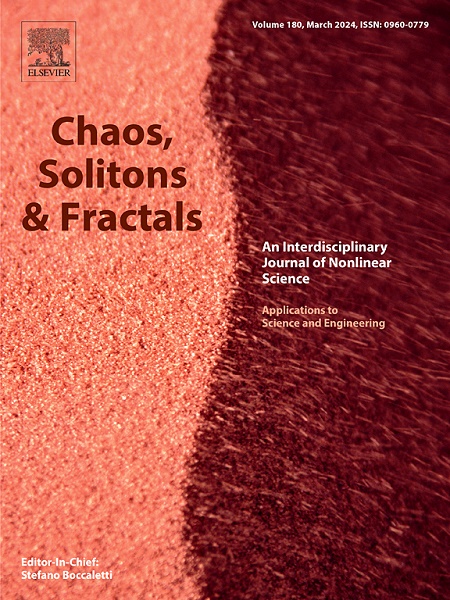Analyzing unsteady flow of shear-thinning nanofluids over a cylinder with exponential stretching and shrinking: An artificial neural network approach
IF 5.3
1区 数学
Q1 MATHEMATICS, INTERDISCIPLINARY APPLICATIONS
引用次数: 0
Abstract
Current study aims to implement a novel intelligent numerical computing framework by applying a computational artificial neural network designated with Bayesian regularization network (BRN) to underscore a comparative analysis for the impact of unsteady shear-thinning behavior of the flow of nanofluid through an exponentially stretching or shrinking cylinder. Transformed governing model of ordinary differential equations in cylindrical coordinates based on Buongiorno model is analyzed. The reference dataset for Buongiorno model is obtained by using Adam numerical solver against six scenarios with the variation of parameters namely, stretching/shrinking parameter, Weissenberg number, Reynold number, Brownian motion parameter, Prandtl number, and Lewis number. The acquired datasets are feed into a supervised computational framework utilizing BRN to approximate solutions for the unsteady shear-thinning behavior of flow system. The robustness of the stochastic process based on the BRN is validated through extensive simulation including convergence plots using the mean square errors, the performance of adaptive control parameters in the optimization algorithm, error distribution histograms and regression analysis. The optimal validation performance is observed in relation to epoch number index at epoch 621, 239, 548, 427, 580, 826 and 717 respective to all the scenarios. Further, observed mean squared errors (MSE) between target and output data of approximately 1.1383 × 10−11, 4.4409 × 10−11, 4.3824 × 10−12, 3.7145 × 10−12, 3.4385 × 10−13, 1.0341 × 10−11and 3.1188 × 10−11, recorded at times of 2 s, 1 s, 2 s, 2 s, 3 s, and 2 s respectively. These quantitative measures demonstrate minimal error margin which ensure the reliable alignment with numerical data.
分析剪切稀化纳米流体在具有指数拉伸和收缩的圆柱体上的非稳态流动:人工神经网络方法
本文章由计算机程序翻译,如有差异,请以英文原文为准。
求助全文
约1分钟内获得全文
求助全文
来源期刊

Chaos Solitons & Fractals
物理-数学跨学科应用
CiteScore
13.20
自引率
10.30%
发文量
1087
审稿时长
9 months
期刊介绍:
Chaos, Solitons & Fractals strives to establish itself as a premier journal in the interdisciplinary realm of Nonlinear Science, Non-equilibrium, and Complex Phenomena. It welcomes submissions covering a broad spectrum of topics within this field, including dynamics, non-equilibrium processes in physics, chemistry, and geophysics, complex matter and networks, mathematical models, computational biology, applications to quantum and mesoscopic phenomena, fluctuations and random processes, self-organization, and social phenomena.
 求助内容:
求助内容: 应助结果提醒方式:
应助结果提醒方式:


